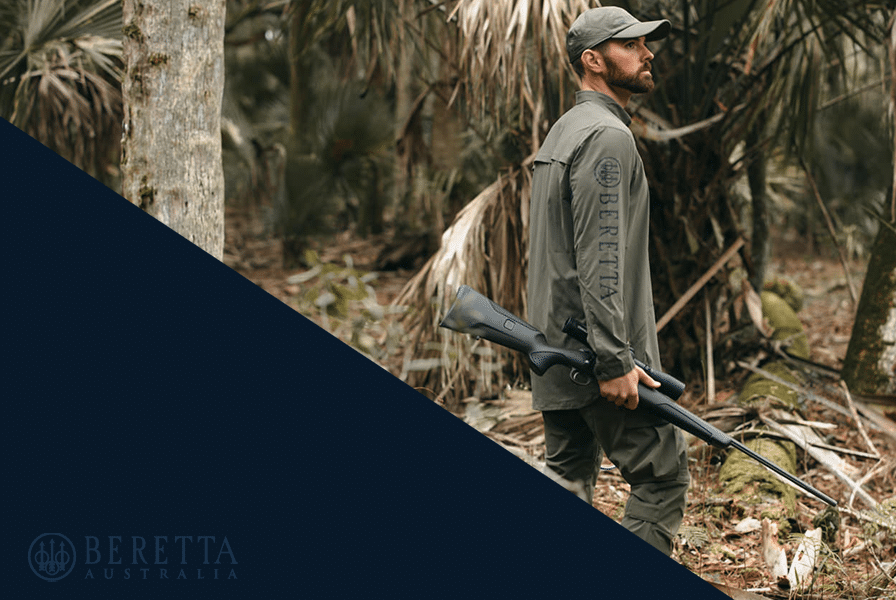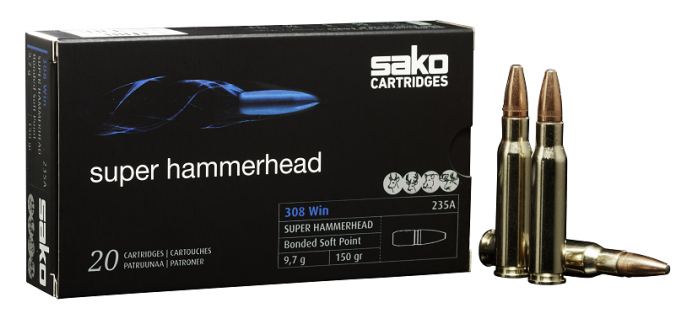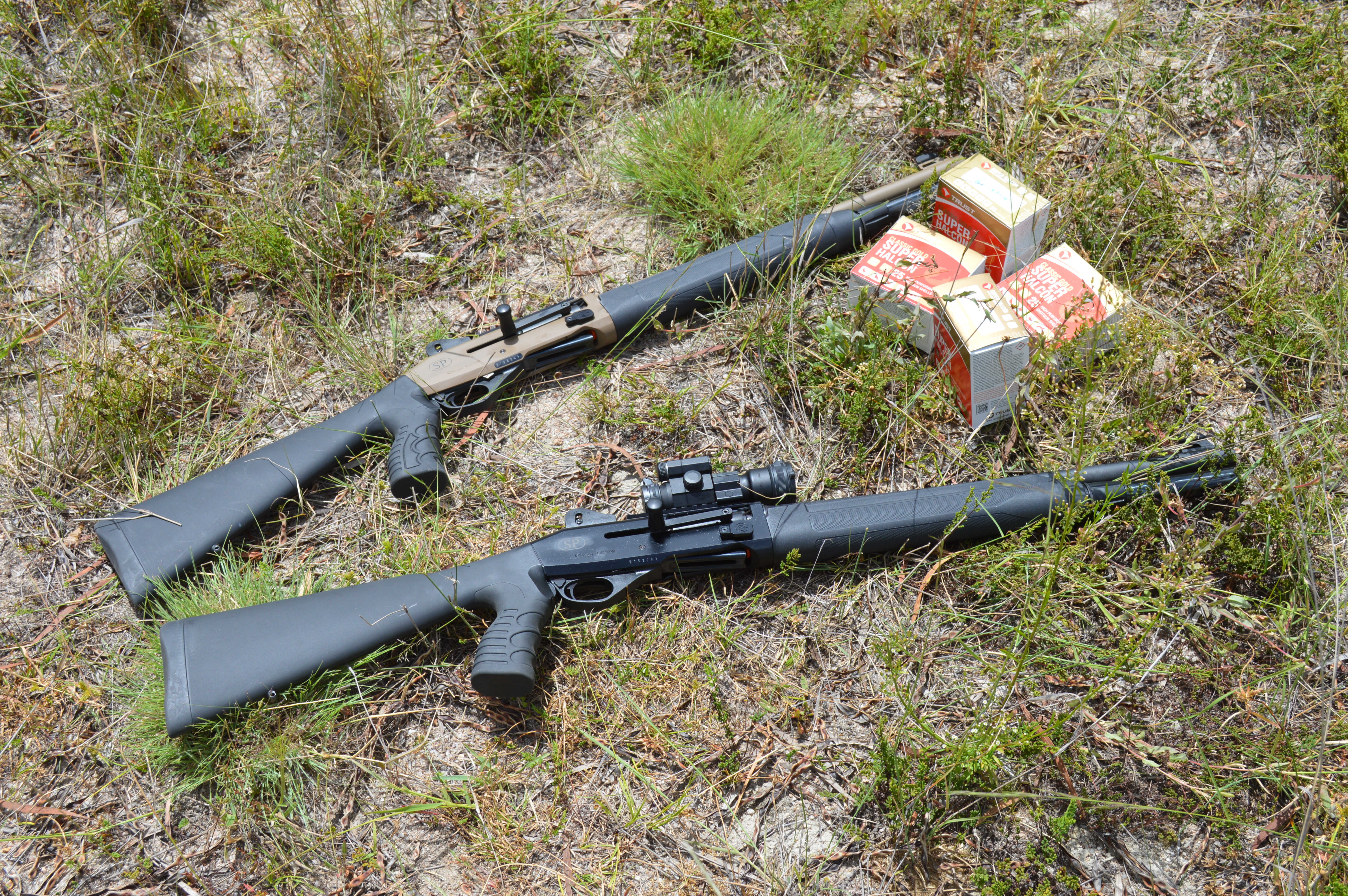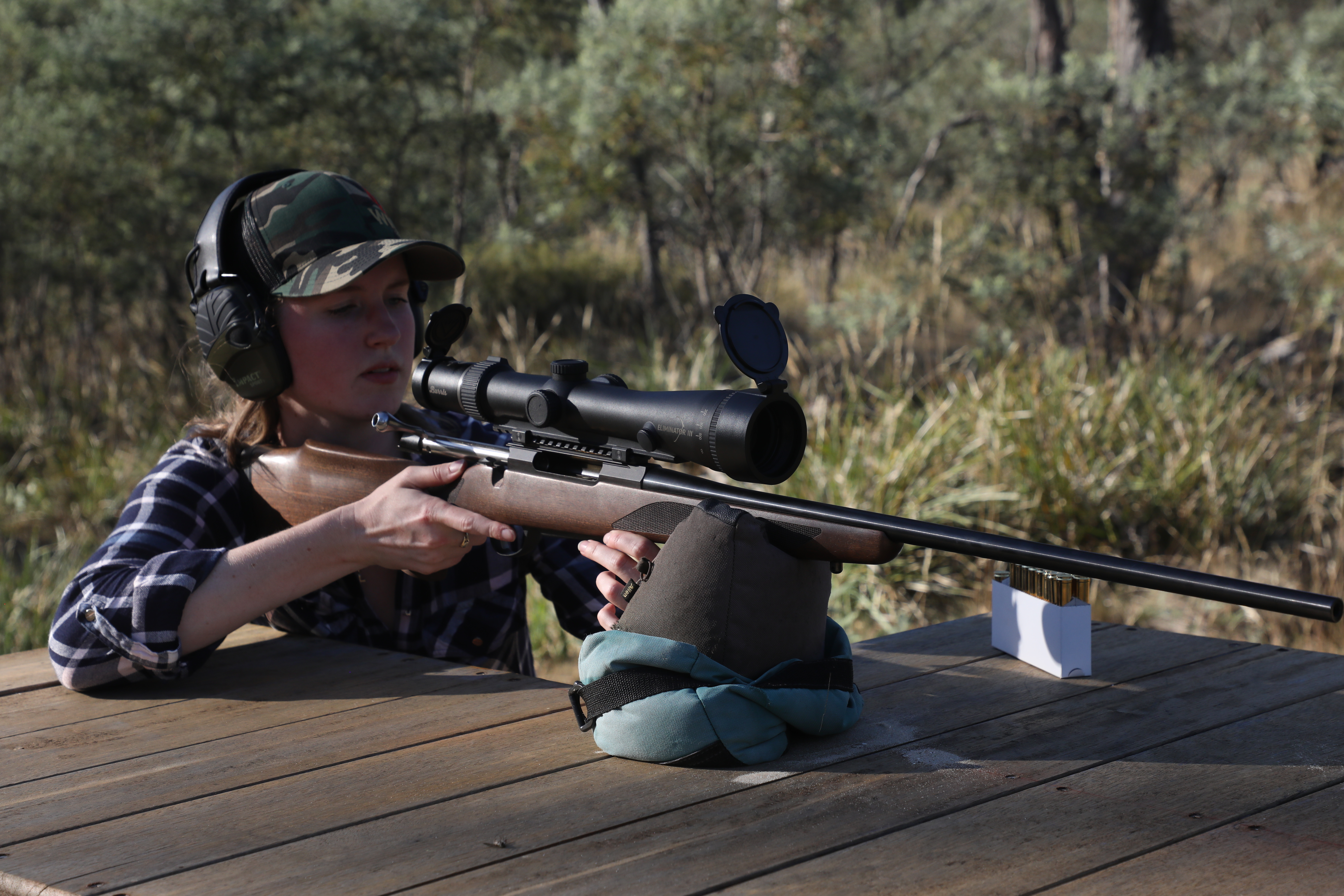

SAKO 85 “Hunter”. A combination of traditional styling and impeccable pedigree resulting in the epitome of the modern hunting rifle.
There are so many choices available to us when it comes to hunting rifles, it can seem bewildering. The hunting rifle market is highly competitive, and manufacturers are constantly bringing us new features that sometimes, can distract from what is most important when it comes to choosing a hunting rifle that is right for you.
This article is dedicated to bolt action hunting rifle selection because throughout the world, they are the most popular configuration for hunting, and for good reason. No other rifle action configuration lends itself to accuracy to the same degree as a bolt action of good design and manufacture.
The humble old turn bolt repeating action, brainchild of German gun maker Johann Nicolaus von Dreyse back in 1836, has evolved to the present day, and its evolution has built upon the original camming and primary extraction that von Dreyse invented. No other rifle action can claim the gram for gram strength and extraction reliability of the bolt action.
However, there is a lot more to choosing a hunting rifle that suits you than just the action and who makes it. So, when it comes to choosing a new rifle to hunt with, let’s examine six criteria that have worked for me over many years of hunting in Australia and abroad.
ONE: Cartridge. Sometimes referred to as calibre, however for the purpose of this essay we will discuss the total medicine, not just the diameter of the bullet. Choosing a cartridge and bullet weight/construction with sufficient energy and reach to humanely dispatch our quarry is of primary and ethical importance. If you cannot handle the recoil of your chosen cartridge and rifle combination, you will have great difficulty in shooting accurately and humanely.
Your cartridge needs to match the game to which you intend to hunt. In Australia, the 223 Remington is our most popular centrefire cartridge. Untold numbers of thin skinned game have been dispatched with the “223 Rem” as its often referred to. With 55 grain soft point spitzers, the 223 is capable of humanely taking thin skinned feral game such as foxes, feral dogs, and cats out to 300 metres. 300 metres assumes shots are made in the hands of a capable shooter who can read the wind, accurately estimate distance, and knows their trajectory. Cut that distance in half or less for inexperienced and untrained shooters.
However, the hugely popular 223 Rem can also harvest wild pigs with proper bullet selection and accurate bullet placement, but it’s not recommended. Heavier and larger boars are deserving of larger and more powerful cartridges and the 308 Winchester shines when it comes to big boars.
When game such as deer are your quarry, cartridge selection will vary considerably with species. Hog deer hunters, fortunate to draw a tag in the ballot conducted by Victoria’s Blond Bay Hog Deer Advisory Group, for hunting on Blond Bay State Game Reserve, Boole Poole Peninsula, and Snake Island, will make their cartridge and bullet selection carefully due to the small size but extreme hardiness of this beautiful deer. Current legislation mandates the 243 Winchester with an 85 grain projectile as the minimum. However, Axis Porcinus may be small in stature but more than makes up for height at the shoulder in terms of hardiness. Hog deer hunter hunters sometimes use cartridges such as 25-06 Remington, 270 Winchester and 308 Winchester.
Match your cartridge to the game you intend to hunt and always err on the side of ethical and humane cartridge and bullet selection.

SAKO produce an excellent range of hunting ammunition for all species of game.
TWO: Action and Bolt Characteristics. Controlled round feeding, action length, smooth bolt travel, consistent feel when opening and closing the bolt, safety type and operation: all these factors are paramount when choosing the manufacturer of your hunting rifle. Let’s start at the beginning where the cartridge is picked up by the bolt and pushed forward into the barrel chamber. This step will always benefit from “controlled round feeding” for which there is more than one implementation by various manufacturers.
I can attest, from personal experience, to the excellent reputation that SAKO and TIKKA rifles have when it comes to controlled round feeding. Both brands have the uncanny ability to ensure reliable chambering of even the most challenging to feed cartridges such as the newer short magnums. Action length is also important because the action needs only to be long enough to comfortably accommodate your cartridge and bullet selection. Action lengths longer than required add unnecessary weight and bolt travel. Sako 85 actions come in six different sizes and deliver smooth and reliable operation straight out of the box. All Sako 85 and Tikka T3x rifles feature controlled round feeding to prevent double feed problems or cartridge jams.
 |
A safety such as that featured on the Sako 85 series, that is always positive, smooth, and quite in operation is preferred over those that require more than just the thumb to select fire and safe.
The 85 Series safety locks both the trigger and the bolt handle. The unique bolt release button enables loading or removal of cartridges from the chamber while the safety is engaged. |
THREE: Trigger. Without a doubt, user adjustable triggers are preferred over those that must be tuned by a competent gunsmith. Rifles, such as those from Sako and Tikka, feature user adjustable triggers and “set riggers” are optional on some models. Set triggers may be more desirable to shooters engaged in varminting and/or still hunting from a blind or stand. A single, set trigger is one trigger that fires with a heavier trigger pull, but can be “set” by pushing forward on it. Once set, the trigger pull weight is very light.
The trigger pull-weight of single-stage Sako 85 triggers is adjustable from 1 to 2 kg (2–4 lbs). An optional single-set trigger is available for most Sako 85 models and the same applies to most Tikka T3x models.
All in all, a smooth trigger that is crisp and consistent in let off is a major contributor to accuracy. Sometimes, the weight of pull on factory triggers is too heavy but better brands will feature user adjustability to enable reduced trigger pull within the limits of safe operation.
FOUR: Sights. While there are many options for sights, and they deserve a separate discussion, basically we need either open sights, a telescopic sight, or both. Your requirements will largely be defined by the game you intend to hunt. For example, a 5-25×56 1st focal plane, long range precision rifle scope would not be the best choice for fast moving pigs at close quarters in the sugar cane. The inverse is also true. Take Battue sites as featured on TIKKA Battue style rifles for example. Battue sights are open and incorporate an extended and ascending ramp with a shallow V or flat rear notch about half to three quarters of the way along the barrel, and behind the front sight. Developed in Europe primarily for driven wild boar, they are fast to acquire and well suited to fast moving game at close quarters.

TIKKA “Battue Lite” incorporates Battue sights with TruGlo® optic fibres for fast action on close game in heavy cover.
The TIKKA Battue models have taken the concept further and incorporated TruGlo® optic fibres for fast and close action. Battue sites are ideal on pigs in the sugar cane, but they are not intended for taking game at long range.
Open sights such as express sights are a great option on rifles intended for use on big game. Express sights are not conducive to tack-driving target shooting small game at extended distances, however.

The beautiful Chapuis Brousse double rifle chambered in 416 Rigby features a precise, single fixed blade and three folding blades in the rear sight. This open sight system enables a hunter to “flip-up” the appropriate leaf for longer ranges when required. In addition, there is provision for mounting a low-power scope as well for those who prefer scopes or both.
Express sights are a premium double rifle feature that are ideally suited to hunting Top End Asian water buffalo and Banteng, where distances can be anywhere from a few metres to 200 metres and sometimes more. When it comes to hunting large and dangerous game, express sights certainly have the runs on the board.
However, aperture sights are also a great choice for the dangerous game scenario. Aperture sights, also referred to as “peep” or “ghost ring” sights, provide a longer sighting radius than other open sight systems and posess the unique attribute of automatically centering the front sight post in the rear aperture and providing much faster sight acquisition. This is all to do with how our brains percieve the front post relative to the rear ring or aperture. This faster means of sighting in addition to the longer sight radius, makes very fine aperture sights a favourite for long distance open-sight shooting. With large rear apertures they are a dandy on pig rifles and shotguns such as the Stoeger M3000.

A pair of Stoeger M3000 pull-actions 12 guage guns used for pig culling. Both guns digest heavy 00 Buck and BB loads manufactured by Trust, a manufacturer of premium shotshell ammunition for hunting and competition.

Aperture sights such as those featured on the Stoeger M3000 are an excellent choice for fast moving pigs out to 40 metres.This model features fast target acquisition aperture sights and a rail to mount the shooter’s optic of choice.
Telescopic sights come in two configurations, 1st Focal Plane and 2nd Focal Plane and many, many variations including fixed and variable power; although variable power scopes are the most popular. Telescopic sights or scopes as the are often called, have sufficient importance to deserve an essay or rather a book all of their own. I am going to generalise here and say that “generally” speaking, your first scope choice for hunting will be a 2nd focal plane, variable power scope.
We won’t delve into the details of 1st and 2nd focal plane optics here, suffice to say that neither is better than the other. However, its best to be aware of some of their differences when choosing your first scope on a hunting rifle.
2nd focal plane scopes provide a reticle that does not change in size when a scope magnification is changed. For hunting, when stalking in thick or semi-open country, with the variable power set at its lowest, a second focal plane scope presents us with a full-size retical that is easy to see. Not so with a 1st focal plane scope; in this case, reticle size changes with magnification. At its lowest power setting, the reticle on a first focal plane scope of say 5-25 will be very small and not ideal at all for snap shooting. However, at 25x power, the reticle with be large and pronounced and the cross hairs can be thick and able to obliterate (cover over) small targets such as head shots on small game.
So, why would we even consider a 1st focal plane scope for hunting? The answer is simple. For long-range shots on undistrubed game, the first focal plane scope provides us with reticles and hash-markes to assist hold-over for trajectory and distance and hold-off for wind amongst other things. Let’s keep it simple and say that when choosing a scope for your first hunting rifle, a 2nd focal plane of variable power will most likely be your best choice.
If you are reading this documant because you are researching your “first” scope, for your “first” hunting rifle, don’t be lured into buying the most powerful variable model you can afford. Variable scopes must provide the shooter with a comprimise between adequate maximum magnification for long-distance shots from the prone or other non-standing off-hand position or steady rest, and a low-power setting for fast, snap shooting at moving game. Take for instance Sambar hunting in the Victorian high country. The mighty Sambar is Australia’s premier game animal and is often encountered in heavy scrub within 60 metres of the hunter. If you have stalked well and the stag or hind presents a shot, it will often be a quartering or away shot at a fast moving beast in or close to cover. In this secenario, a low-power, wide field of view will be appreciated when swinging the rifle and maintaining your eye on the prize. In recent years, illimunated reticles have become a common attribute on some scopes and they certainly assist in getting your eye to the point of aim faster.

The (second focal plane) Steiner Ranger 1-4×25 with illuminated reticle is an ideal choice for a scope to be used when hunting game in heavy scrub. The variable brightness control of the 4A-IR reticle allows the shooter to match reticle brightness to all ambient light conditions.

The (second focal plane) Steiner Ranger 3-12×56 with illuminated reticle is a great choice of scope to be used in a wide range of hunting scenarios. The large 56mm objective combined with 12 power magnification is a handy combination for those early dawn and twilight still shots at undisturbed game at distance. With the magnification set at 3 power, the scope can also serve snap-shooting duty on a 30-06 or 300 Winchester Magnum in Sambar country.
Five: Weight, Balance and Handling. If a rifle doesn’t feel comfortable to you, don’t expect to shoot well with it. Ergonomic controls, bolt handle, safety, magazine release for integral or detached box magazines, all are important for easy use and should be able to be found without needing to “look” for them when operating the rifle. The trigger guard and trigger position should feel just right for comfort and unhindered snap shooting. The length of pull required can vary greatly for men and women of different shapes and sizes, not to mention hunting in hot weather with just a cotton shirt versus winter still hunting at high altitude when wearing bulky cold weather gear.
Try your friends rifles at the range and ask your dealer to let you mount to your shoulder the models he or she has in stock. Hold them one handed. How do they fell? A few extra grams don’t matter to a rifle used for culling and spotlighting from a vehicle but may be a deal breaker for a rifle that must be carried on your back (plus your pack and swag or bivvy) into the high country at winter time. How does the rifle mount and swing? Does it feel right? If it feels right, chances are you will shoot it right. If it feels cumbersome, or slow to the shoulder, keep looking, now is not the time to hurry, now is the time to make certain the rifle fits you.

Tikka T3x Lite with adjustable stock provides adjustable length of pull and cheek piece height. Ideal for hunters using the same rifle hunting wild dogs during January in western QLD and pronghorn antelope in western Montana in the dead of winter.

Hunter zeroing the Burris Eliminator III on her Tikka 308. This scope has a built-in laser rangefinder enabling precise range-finding. The scope is accurate at long range not just because of its quality but because of its onboard ballistic calculator and illuminated point of aim guidance system that provides a dead-on aiming point for the hunter. The Burris Eliminator III is a prime example of technology contributing directly to the ethical and humane dispatching of game.
Six: Materials and Construction. I’m old-school, a traditionalist, I like fine timber and blued steel. However, I hunt a lot and any maintenance I can avoid means time better spent. My work rifles feature synthetic stocks and stainless barrels and actions because they are more serviceable. Timber stocks will show scuffs and wear more readily, but laminated timber stocks can be a serviceable and ascetically pleasing alternative. Ultimately, it’s up to you to decide.
Another factor worth considering is bedding. Timber stocks will generally require pillar and/or glass bedding to ensure the barrel and action are situated in the stock without variation due to humidity and weather. Synthetic stocks have a distinct advantage here provided the barrel is free floating and there are stock pillars for the action screws to bed on. This is generally all that is required to ensure repeatable accuracy in the bush and on the bench.
So, there you have it, consider these criteria, ask questions when talking options with your dealer and look to mentors at your club, range or within your friends or family circle. Remember this too, your rifle is a personal choice, it must fit you and suit your requirements. Make your choice wisely and you are guaranteed many years of enjoyment.
© BERETTA AUSTRALIA 2023